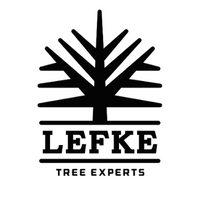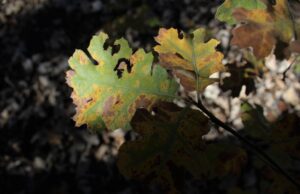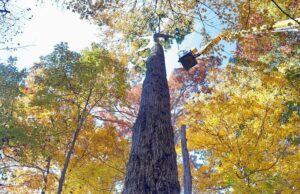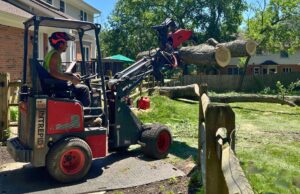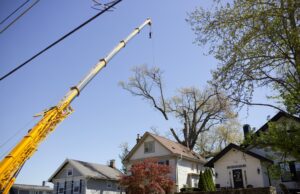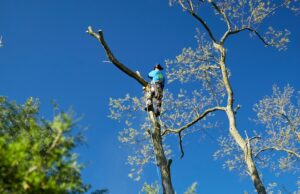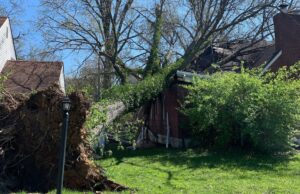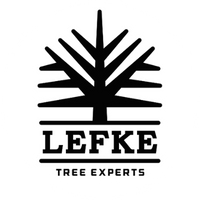Tree topping is a form of “pruning” that’s still commonly used in the Cincinnati area (and many other parts of the country, too). We’re often asked to top trees, usually by people who’ve seen their neighbor’s trees cut this way and assume it’s a normal tree care practice. But it’s not. In fact, topping a tree is the second most common cause of tree decline and death (the first is planting a tree too deeply in the ground).
To help you understand why we don’t perform this damaging assault on trees, we share the common myths about tree topping (things consumers are often told by untrained tree workers) and explain the real facts.
Keep reading for some tree topping myth-busting!
What is tree topping?
In general terms, tree topping is removing the tops of trees. It can also be called rounding-over, heading, stubbing, tipping, lopping, hat-racking, and dehorning.
Tree topping is a drastic pruning method that promises a lot of things but delivers quite the opposite. In the most extreme circumstances (which we’ve also noticed still happens quite frequently), trees are topped down to nothing more than stubs.
Why do people top their trees?
Despite all of the articles, literature, and notices out there about the disastrous effects of tree topping, you can still see it done widely. Tree topping is usually done in public spaces by city employees who have not been trained on proper pruning techniques, as well as on private property by “guys with a chainsaw” who are more interested in making a sale than ensuring your trees continue to be healthy and safe.
Myths About Tree Topping
Tree topping results in large pruning cuts that don’t heal easily, if at all. This lets in moisture (the hole in the tree shown above is full of water from rain a few weeks ago and is a perfect breeding ground for mosquitoes), fungi, insects, and pathogens that destroy the tree. As the tree dies, it becomes unsafe and unsightly.
Myth #1 - It'll Keep Your Tree Shorter
Tree topping will keep your tree shorter so that it won’t run into power lines, buildings, block your view, etc.
The Real Facts
Tree topping is the worst thing you can do in an attempt to keep a tree small. When you top a tree, new small branches, called water sprouts, will shoot up not long afterward. These water sprouts grow back 4 to 10 times faster than normal branches and shoot straight upward. When you try to prune these water sprouts by cutting them off, they multiply each time.
This means that if you top a tree, you have to constantly prune it again and again. This is one of the reasons that tree topping is a popular sales technique, as you’ll have to continue hiring the same people over and over to keep the tree at a reasonable size.
In contrast, proper pruning techniques direct the branches away from wires or other dangerous areas so they don’t need to be pruned so aggressively. Professional pruning also maintains the tree’s structure, helping it to be stronger and safer in storms.
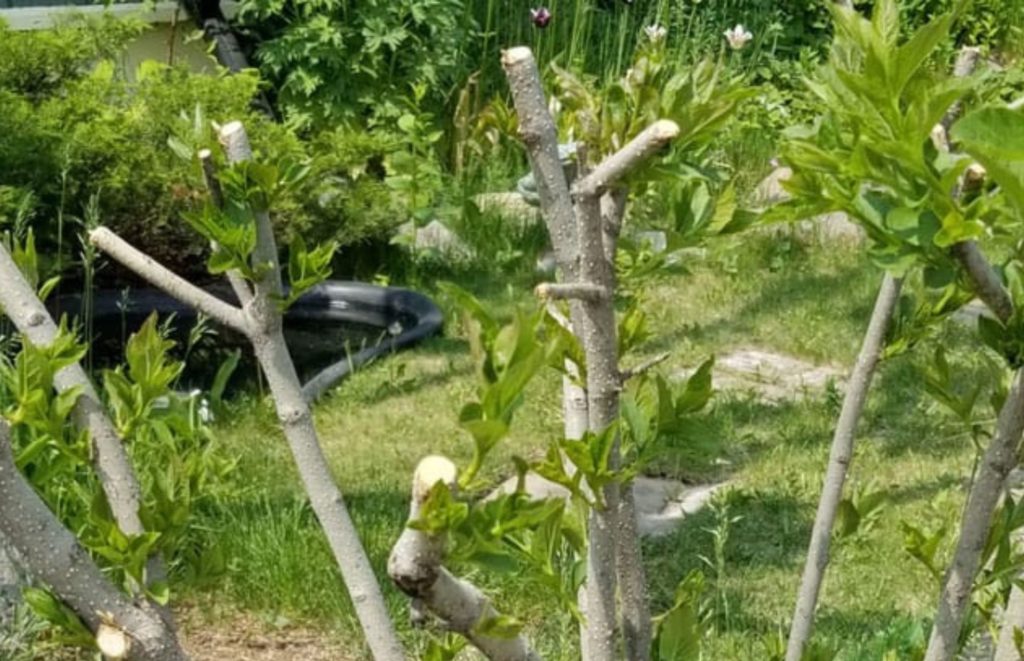
The homeowner cut back his tree to "shorten it up a bit". Two months later, the tree was crowded with thin, weakly-attached watersprouts that quickly grew to be taller than the tree would've been if he had pruned it properly (or not cut it back at all!).
Myth #2 - It's Cheaper
You can prune your trees at a steal! Tree topping is the most inexpensive option, so you’ll be saving a ton of money.
The Real Facts
Topping your trees will cost you more money (and frustration). Here’s why:
- As we mentioned earlier, topped trees need to be pruned constantly to keep up with the water sprout growth.
- The stressed trees are more prone to pests and pest treatments can be costly.
- The decline of the tree will likely lead to its premature death, and tree removal and replacement are costly.
- Planning to put your house on the market in the next few years? Topped trees reduce home values and lessen curb appeal, especially ones that are clearly dying.
- In some instances, people have been fined for topping their trees, usually in areas where tree topping is illegal, such as Vancouver and San Francisco.
Myth #3 - The Tree Will Be Healthier
Topping gets rid of excess foliage, so the tree has more energy to focus on other parts of the tree.
The Real Facts
Leaves are how a tree gets nutrients and are needed to produce energy. The leaves gather water and sunlight and convert it into food for the tree. If a tree loses most or all of its leaves, it has to use stored energy, making it more vulnerable to pests and diseases. The quick spurt of growth following tree topping may seem like health is returning, but this can be deceptive. More on that below.

This tree in Hyde Park was topped about 15 years ago, causing the main trunk and larger branches to rot from the inside-out. Eventually, the tree died and had to be removed.
Myth #4 - It'll Look Better & Be Healthier
New growth will appear almost immediately, rejuvenating the tree, improving its appearance, and making it stronger.
The Real Facts
The regrowth after topping is faster, but these are emergency growths (water sprouts) that the tree sends up in desperation. The tree is under extreme stress and the water sprouts are weak, grow directly upwards, are ugly, and are not well-attached to the branch, meaning that they’ll probably break off as they grow.
The cut branches will often rot where the water sprouts appear (because of the non-selective pruning cut), so it’s highly likely that you’ll have branches falling all the time for seemingly no reason. That’s dangerous, expensive, and unattractive.
Myth #5 - Everyone Does It
Everyone else on your block is topping their trees. You should too.
The Real Facts
We really, really hope that’s not the case, but if it is, your neighbors will soon have dead, dying, or diseased trees that look awful, attract destructive insects and diseases, and constantly need to be pruned to keep them “in bounds” and remove unsafe, rotting branches. We’re guessing that’s not what you want for your own trees!
Do This Instead
Using a trained tree care professional is one of the best investments you can make. These individuals are properly trained in pruning techniques that can save your tree, prevent storm damage, keep the branches away from power lines, maintain the structure, and keep it strong and healthy. There are also proper pruning methods to thin a tree to reduce shade or to reduce its height without ruining the structure and health of the tree.
Don’t Top Your Trees!
To quote an article from the North Carolina State University Cooperative Extension:
“Topping is a bad thing in Charlotte and a bad thing in Lincolnton. It’s a bad thing in Denver, and from Vale to New Zealand. In other words… it’s just bad. The International Society of Arboriculture, the U.S.D.A. Forest Service, NC State University, Clemson, Virginia Tech, University of Minnesota, Penn State University, Purdue, University of Illinois, Washington State University, Montana State University, University of Arizona, my uncle’s youngest nephew, and all agricultural schools I have checked, are very clear in stating that tree ‘topping’ is highly unprofessional and damaging. Yet somehow, people are still paying good money to have this ‘service’ performed.”
Tree topping is still in practice because people are not properly informed, so please feel free to share this information. Trees have so many benefits, and the health of trees in a neighborhood, town, city, or state affects everyone nearby.
Call Lefke Tree Experts For Proper Pruning
Please contact us if you have any questions about pruning or if you want to schedule a consultation to learn more about your professional pruning options. We’re happy to help you keep your trees healthy, well maintained, and beautiful.
